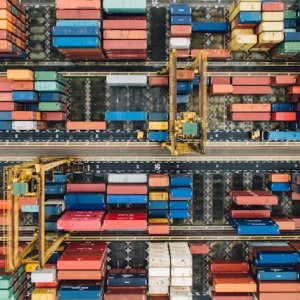
Heavy Vehicles in the Road to Sustainability
 By Alejandro Enríquez | Journalist and Industry Analyst -
Wed, 09/22/2021 - 17:18
By Alejandro Enríquez | Journalist and Industry Analyst -
Wed, 09/22/2021 - 17:18
You can watch the video of this panel here.
Transportation is one of the largest sources of greenhouse gas emissions in Mexico, which also has an old vehicle park with an average age of 19 years; some of these vehicles are over 40 years old. The path toward greener vehicles is already set but getting there relies on a multistakeholder approach, agree OEMs.
Mexican authorities are changing regulations to address greenhouse gas emissions and provide cleaner transportation. NOM-044-SEMARNAT, for example, regulates vehicle efficiency and greener fuel consumption using technologies such as EPA 10 and EURO VI. However, the poor availability of ultra-low-sulfur diesel makes the implementation of the NOM a challenge. “NOM-044 regulates diesel emissions and the manufacturing of this technology. Heavy vehicle manufacturers must comply with this regulation but to do so we need to have ultra-low-sulfur diesel available to use EPA 10 and EURO VI technologies. We are working with SEMARNAT to acquire more information to apply this regulation and create new ones. This norm will reduce emissions in new vehicles but it cannot reduce emissions in the old vehicles that are already on the streets,” said Miguel Elizalde, President of ANPACT, the national association of heavy vehicle manufacturers.
Heavy vehicle manufacturers have clear strategies to comply with increasingly stringent environmental regulations and reduce their carbon footprint. "The need for sustainable mobility solutions will remain as long as there are cities. Daimler has made important advances on BEVs and FCEVs with powertrain solutions,” said Jesús Gómez, Market Development and Product Portfolio of Daimler Trucks Mexico. Daimler is Mexico’s largest heavy vehicle producer, exporter and seller. Its goal is to offer a vehicle fleet totally free of carbon emissions by 2039. “In the meantime, we continue to reduce our energy and water consumption to reduce our carbon footprint in all our business units.”
Scania, a leading provider of commercial vehicle technologies, is also making sustainable transportation a priority. “At Scania we are aware that global warming remains an issue and act proactively in finding a solution. We have different technologies available for different markets that include vehicles powered by hydrogen, ethanol, biogas, LP gas, natural gas and electricity, among others. We are aware we are living a transition period, in which technologies will last longer. Scania adapts to customers’ need,” said Raúl Rodríguez , Business Transformation Solutions Director at Scania México. Scania plans that by 2050 all its units will be powered by alternative sources. By 2025, 50 percent of its production processes will use renewable energy and as part of the UN Global Pact Scania will continue to work to promote sustainability.
For Mack Trucks and Volvo Buses, two of the top 10 brands in the Mexican commercial vehicle market, sustainable transportation is also essential. Volvo plans to comply with the goals set in the Paris Agreement by 2050. “This is the greatest challenge of our generation but sustainable transportation solutions are essential for a society to thrive,” says Gilberto Ramírez, Director of Strategic Planning & Business Development at Volvo Group Mexico. “With many of our products being used for 10 years on average, if we want to reach our goals by 2050, by 2040 we should manufacture only fossil-free vehicles,” says Ramírez. By 2030, 30 percent of Volvo Group’s production will be fossil-free vehicles.
Sustainability is not only achieved by a vehicle portfolio; it also requires proficient aftersales services, training and technology. “Sustainability in aftersales has also been important for us. We offer remanufactured components that maximize the units’ performance in operations. The remanufactured components are considered ecological in terms of recovery and component assembly,” said Gómez. Scania is focusing on training vehicle operators to reach greater efficiency. “Training drivers can improve fuel efficiency by 5 percent. We are launching flexible maintenance programs and changing our approach based on our clients’ operations. Finally, we are digitalizing our fleet by connecting our vehicles, which allows us to detect the ideal time for maintenance,” said Rodríguez.
In transition to more extensive green vehicle technologies, fuel efficiency for both buses and trucks is key. “Efficiency is essential. We are transitioning to more sustainable vehicles but current models should be more efficient too,” said Ramírez. Efficiency will lead to greener technologies. “Reducing fuel consumption is highly beneficial for transportation. Acquiring technologies for fuel efficiency will generate greater profits. Infrastructure is also essential for vehicle operations. Ultra-low sulfur diesel will promote greener technologies,” said Gómez.
To reach a sustainable transportation, multistakeholder partnerships are essential, said Scania’s Rodriguez: “We need to work from four perspectives: industry chambers, governments, OEMs and clients. This should be an ongoing work,” he said.
















